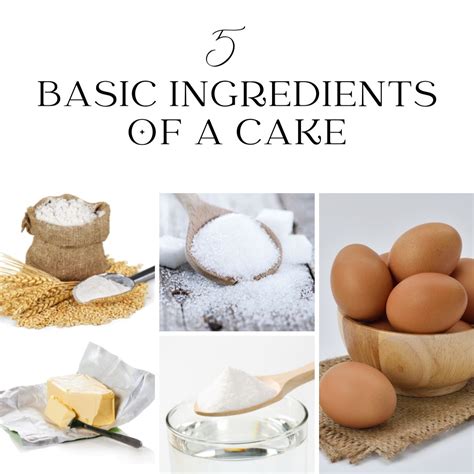Sunscreen Showdown: Hawaiian Tropic Silk vs. Neutrogena Beach Defense
When it comes to protecting your skin from the sun's harmful rays, choosing the right sunscreen is essential. But with so many options on the market, it can be tough to know which one is best for you. In this article, we'll compare two of the most popular sunscreens on the market: Hawaiian Tropic Silk and Neutrogena Beach Defense. We'll look at their ingredients, sun protection factor (SPF), and other features to help you make an informed decision about which sunscreen is right for you.
Ingredients
Hawaiian Tropic Silk:
-
Octinoxate (7.5%): A chemical sunscreen that absorbs UVB rays.
-
Octisalate (5%): A chemical sunscreen that absorbs UVB rays.
-
Homosalate (10%): A chemical sunscreen that absorbs UVA and UVB rays.
-
Octocrylene (10%): A chemical sunscreen that absorbs UVB rays.
-
Ethylhexyl Salicylate (5%): A chemical sunscreen that absorbs UVA and UVB rays.
Neutrogena Beach Defense:
-
Octinoxate (7.5%): A chemical sunscreen that absorbs UVB rays.
-
Octisalate (5%): A chemical sunscreen that absorbs UVB rays.
-
Homosalate (10%): A chemical sunscreen that absorbs UVA and UVB rays.
-
Octocrylene (10%): A chemical sunscreen that absorbs UVB rays.
-
Avobenzone (3%): A chemical sunscreen that absorbs UVA rays.
Sun Protection Factor (SPF)
SPF is a measure of how well a sunscreen protects your skin from the sun's UVB rays. The higher the SPF, the more protection you have.

-
Hawaiian Tropic Silk: SPF 30
-
Neutrogena Beach Defense: SPF 70
Other Features
Hawaiian Tropic Silk:

- Water resistant for up to 80 minutes
- Fragrance-free
- Non-greasy
- Lightweight
Neutrogena Beach Defense:

- Water resistant for up to 80 minutes
- Fragrance-free
- Non-greasy
- Lightweight
- Contains Helioplex technology, which helps to stabilize the sunscreen ingredients and provide broad-spectrum protection
Which Sunscreen is Right for You?
The best sunscreen for you depends on your individual needs and preferences. If you have sensitive skin, you may want to choose a fragrance-free sunscreen like Hawaiian Tropic Silk. If you're looking for a high level of protection, you may want to choose Neutrogena Beach Defense. And if you're looking for a sunscreen that's lightweight and non-greasy, either sunscreen would be a good choice.
Comparison Table
| Feature |
Hawaiian Tropic Silk |
Neutrogena Beach Defense |
| SPF |
30 |
70 |
| Water resistance |
80 minutes |
80 minutes |
| Fragrance-free |
Yes |
Yes |
| Non-greasy |
Yes |
Yes |
| Lightweight |
Yes |
Yes |
| Helioplex technology |
No |
Yes |
Benefits of Using Sunscreen
-
Reduces your risk of skin cancer: Skin cancer is the most common type of cancer in the United States. Sunscreen can help to protect your skin from the sun's ultraviolet (UV) rays, which can damage your skin and increase your risk of skin cancer.
-
Prevents sunburn: Sunburn is a common skin condition that can be caused by exposure to the sun's UV rays. Sunscreen can help to prevent sunburn by blocking the UV rays from reaching your skin.
-
Protects your skin from premature aging: The sun's UV rays can damage the collagen and elastin in your skin, which can lead to wrinkles, fine lines, and other signs of aging. Sunscreen can help to protect your skin from premature aging by blocking the UV rays from reaching your skin.
-
Helps to keep your skin healthy: Sunscreen can help to keep your skin healthy by protecting it from the sun's UV rays. UV rays can damage your skin's DNA, which can lead to skin cancer and other skin problems. Sunscreen can help to protect your skin from these harmful effects.
Tips for Choosing a Sunscreen
-
Choose a sunscreen with an SPF of 30 or higher: This will provide you with broad-spectrum protection from the sun's UV rays.
-
Reapply sunscreen every two hours: This will help to ensure that you are protected from the sun's rays throughout the day.
-
Apply sunscreen to all exposed skin: This includes your face, neck, hands, and feet.
-
Don't forget to apply sunscreen to your lips: Your lips are also susceptible to sunburn.
-
Avoid sun exposure during peak hours: The sun's rays are strongest between 10am and 4pm. If possible, avoid sun exposure during these hours.
Tips for Applying Sunscreen
-
Shake the sunscreen bottle well before applying: This will help to ensure that the sunscreen is evenly distributed.
-
Apply sunscreen liberally to all exposed skin: You should use about an ounce of sunscreen to cover your entire body.
-
Rub the sunscreen in thoroughly: This will help to ensure that the sunscreen is absorbed into your skin.
-
Wait 15-20 minutes before going outside: This will give the sunscreen time to set and start working.
Common Mistakes to Avoid
-
Don't skip sunscreen on cloudy days: The sun's UV rays can still penetrate clouds.
-
Don't rely on sunscreen alone to protect your skin: You should also wear protective clothing, such as a hat and sunglasses.
-
Don't apply sunscreen too close to your eyes: Sunscreen can irritate your eyes.
-
Don't use sunscreen that has expired: Expired sunscreen may not be effective.
Call to Action
Now that you know more about Hawaiian Tropic Silk and Neutrogena Beach Defense, you can make an informed decision about which sunscreen is right for you. Remember, sunscreen is one of the most important things you can do to protect your skin from the sun's harmful rays. So make sure to use sunscreen every day, even when it's cloudy.

